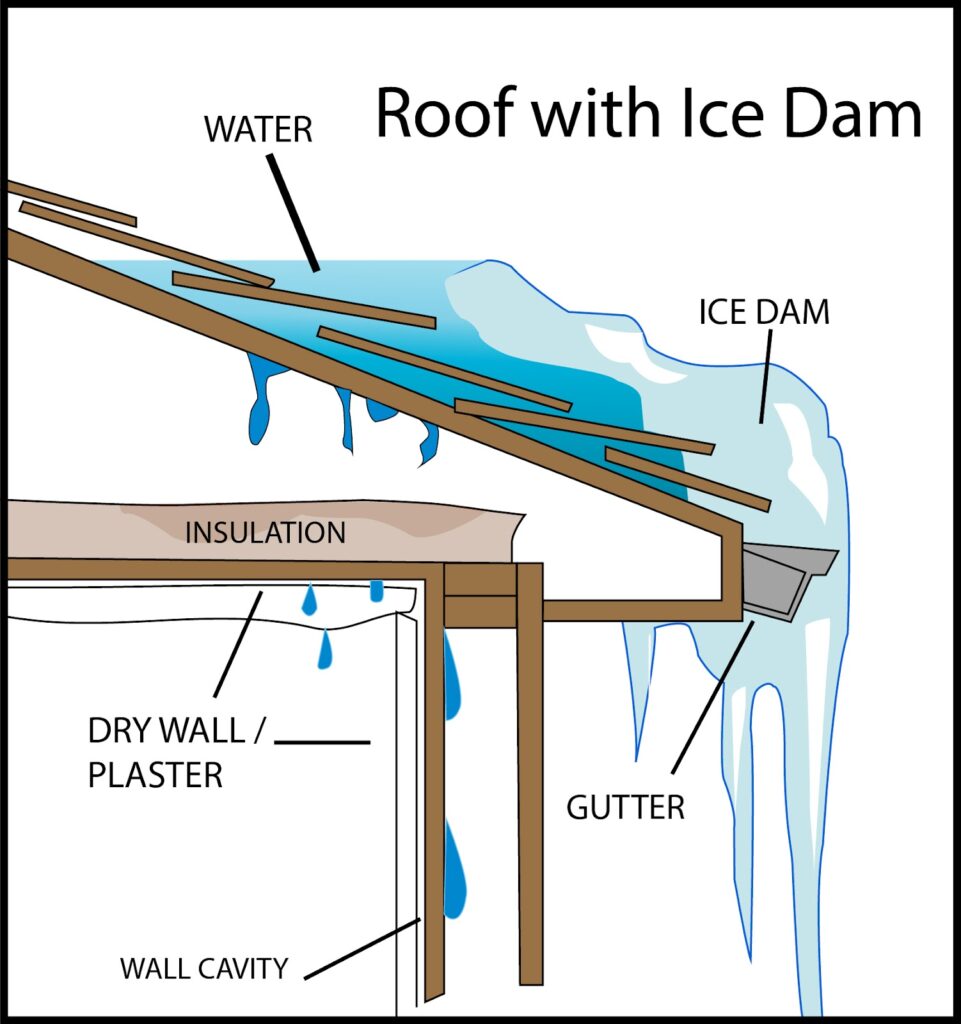
As winter settles in, it's time to turn our attention to one of the most vulnerable parts of our homes: the roof. Snow and ice may paint a picturesque scene, but they also bring potential dangers to our roofs.
In this blog, we'll explore the effects of snow and ice on your roof , as well as the importance of professional roof maintenance during the winter months. By understanding these risks and taking proactive measures, we can protect our homes and ensure that our roofs remain sturdy and secure throughout the winter season.
While snow may seem light and fluffy, its weight can pose a significant threat to the structural integrity of your roof. As snow accumulates, it exerts pressure on the roof, known as snow load. This load can strain the roof structure, leading to potential damage such as sagging or even collapse, particularly in older or poorly maintained buildings.
The weight of snow isn't uniform. Wet, heavy snow weighs considerably more than dry, powdery snow, further increasing the strain on the roof. Factors like roof pitch and design also influence how much snow a roof can safely support.
To mitigate the risk of structural damage, it's crucial to monitor snow accumulation on your roof and take proactive measures, such as safely removing excess snow or reinforcing vulnerable areas.
Ice dams are another winter phenomenon that can wreak havoc on roofs. These ridges of ice form along the eaves of roofs when heat from the attic melts snow on the roof, causing it to refreeze at the colder roof edge. Over time, ice dams can grow larger, trapping melting snow behind them and preventing proper drainage.

The consequences of ice dams can be severe. As water pools behind the dam, it can seep beneath shingles, leading to water damage, leaks, and even mold growth inside the home. Additionally, the weight of the ice dam adds to the snow load on the roof, exacerbating structural strain.
Preventing ice dams requires proper insulation and ventilation in the attic to maintain consistent roof temperatures and prevent snow from melting unevenly. Installing heat cables along the roof edge can also help prevent ice dam formation by melting snow before it refreezes.
Imagine the scenario: Snow blankets your roof, insulating it from the frigid air. Then, as the sun rises or temperatures fluctuate, the snow melts, trickling down to the eaves, where it refreezes overnight. This cycle repeats day after day, week after week.
Each freeze-thaw cycle exacts a toll on your roof. Water seeps into tiny cracks and crevices in roofing materials, expanding as it freezes and contracting as it thaws. Over time, this relentless expansion and contraction weaken the materials, causing them to crack, warp, or break apart.
Asphalt shingles, commonly used in roofing, are particularly vulnerable. The constant expansion and contraction compromise their integrity, leading to curling, buckling, and loss of granules. Wooden shingles and shakes can also suffer, with moisture penetrating and causing rot.
Metal roofs aren't immune, either. While they resist water better, repeated freezing and thawing can cause seams to separate or fasteners to loosen, compromising their ability to keep water out.
Now, let's talk about insulation and ventilation—two unsung heroes in the battle against winter's wrath.
Insulation acts as a barrier, slowing the transfer of heat between your home's interior and the outside world. In winter, it helps retain heat, preventing it from escaping through the roof and melting snow. Without adequate insulation, heat loss can lead to uneven roof temperatures, promoting the formation of ice dams as snow melts and refreezes along the eaves.
Proper ventilation complements insulation by maintaining a steady airflow in the attic. This airflow helps regulate attic temperature and moisture levels, preventing condensation that can damage roofing materials from the inside out. It also helps expel any heat that does escape, reducing the risk of ice dam formation.
Together, insulation and ventilation create a balanced system that protects your roof from the inside and out, prolonging its lifespan and reducing the need for costly repairs.
It's easy to overlook the potential dangers snow and ice pose to your home's most vital protector: the roof. Snow and ice accumulation can silently wreak havoc, causing damage that may go unnoticed until it's too late.
Recognizing the signs of roof damage and prioritizing professional maintenance are essential steps in safeguarding your home during the winter months.
While keeping an eye out for signs of damage is essential, proactive maintenance is equally crucial for protecting your roof from winter's wrath. Scheduling regular roof inspections, especially before and after winter, can help identify and address issues before they escalate.
Professional roof inspections offer several benefits:
Winter can be harsh on our roofs, but with vigilance and proper care, we can minimize the damage caused by snow and ice. By recognizing the signs of roof damage and investing in professional maintenance, we can safeguard our homes against leaks, water damage, and structural issues.
Don't wait until it's too late—take action now to protect your roof and preserve the safety and comfort of your home. With a little attention and care, your roof can weather the winter storms and stand strong for years to come.